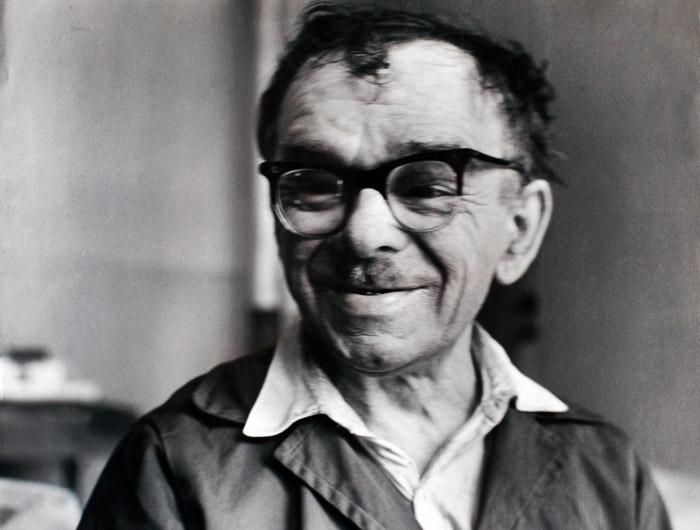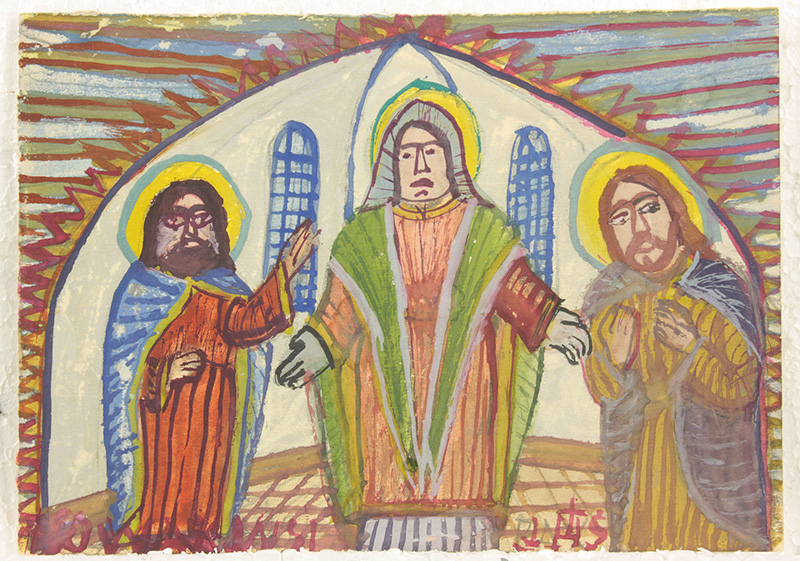5 Famous Artists Who Were Migrants and Other Stories
As long as there have been artists, there have been migrant artists. Like anyone else, they’ve left their homeland and traveled abroad for many...
Catriona Miller 18 December 2024
1 August 2024 min Read
“Epifaniusz Drowniak” is now a household name in Polish naïve art and, arguably, across Europe alongside painters such as Henri Rousseau. For a longer time, the artist is known (and identifying himself) as Nikifor or Nikifor Krynicki. Born on May 21, 1895, in Krynica, Poland, to a deaf Lemko woman employed as a cleaning lady and without the knowledge of his father, Nikifor led an extraordinary life. This article will trace the adversities he encountered and the paths he chose that eventually made him a renowned painter.

Photograph of Nikifor, 1966, Culture.pl.
For Nikifor, life started with hardship. He had inherited a speech impediment, was hard of hearing, and struggled with basic literacy skills—reading and writing were not easy tasks for him. But all along, Nikifor aspired to be a painter. His artistic journey started in school and became his full-time pursuit after his mother, the sole person close to him, passed away.
Although he started as early as age 13, Nikifor struggled to make a living off painting because it was not that profitable. To better sell his works, he chose to display them in prominent city locations. He would also carry a “begging letter” with him, offering his pictures in exchange for food, money, and supplies. Passersby often mistook him for an eccentric beggar, a label he would transition out of later in his life.

Nikifor, Letter of a Beggar. Nikifor.naiveart.
Nikifor put forth considerable effort before becoming a preeminent self-taught painter. With about 40,000 artworks created during his lifetime, his prolific output consists of pieces that each possess a degree of uniqueness. Even for those on the same subject, variations abound due to the difference in time or perspectives.
Like other works classified under naïve art, Nikifor gravitates toward vibrant colors. He was said to turn to an architecture-themed album while painting, as architecture was his lifelong fascination. Evidence also shows how he tried to compensate for the lack of formal art education by seeking guidance from art instructors. However, communication posed significant challenges in this regard.
Nikifor was immensely creative during the interwar period despite persisting financial constraints. On the other hand, limited funds meant he couldn’t afford basic art supplies like paint or paper, so he painted on recycled materials such as used cardboards, kraft paper, cigarette packs, chocolate packaging, and even official prints.
With the resources he had, the artist displayed an exceptional ability to achieve color harmony and subtle light and shadow effects. Many of his works were portraits of saints and biblical scenes inspired by religious icons. The church, in particular, was one of the primary motifs for his artistic endeavors.

Nikifor, Trzej Święci, SDA
Nikifor is best-known for his urban landscapes, which he captured thanks to his travels to Polish cities.
The self-taught painter is also famous for creating portraits of curators, friends, and affluent individuals. In his self-portraits, he often depicted himself adorned in elegant attire, impersonating roles such as a saints, bishops, or judges.
In his paintings, Nikifor transported himself to a better, more beautiful world immersed in bright-colored landscapes and with himself reincarnated as a respected and elegant figure. Notably, he signed his works with “Nikifor-Artist,” which drew comparisons to the renowned Polish painter Jan Matejko. This was likely a gesture of Nikifor to market himself and his artistic productions.
The final years of his life were when the artist gained mainstream appreciation. His art became exhibited both in Poland and abroad, and he was finally able to make an income with his works. Today, articles, poems, books, and documentaries continue to celebrate the legacy of the famous Nikifor.
DailyArt Magazine needs your support. Every contribution, however big or small, is very valuable for our future. Thanks to it, we will be able to sustain and grow the Magazine. Thank you for your help!